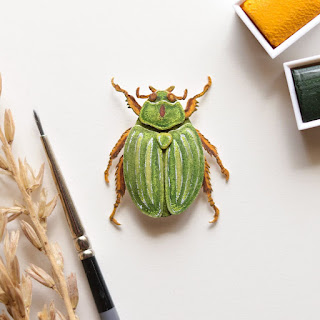Sometimes on the PBS' Antique Roadshow
there will be a pastoral scene of water and a valley. The appraiser
will say, "This is from the Hudson River School." However, it wasn't an
actual school. It was a group of mid-19th century landscape painters of
great talent who were inspired by the area around the Hudson River. It was a matter of artists capturing pastoral scenes which were quickly vanishing.
Arguably, the most famous painter of that style was Frederic Edwin Church (1826-1900). With an eye for drawing detail, he apprenticed for two years with the "school's" founder. By age 20, he sold his first painting for $130 ($4700 in today's dollar!) At age 22, he was elected the youngest member of the National Academy of Design.
In time, Church would widen his subjects by travel. He not only traveled through the eastern USA, but also went several times to South America. His method would be to sketch all the detail on site and then use these sketches and his memory to recreate large paintings in his studio. It was such a trip with an Arctic explorer that led to his dynamic, "The Icebergs."
His paintings were so large that they were shown with the bottom of the frame on the floor. Viewers paid an entry free and sat on benches to see the entire painting. In this way, Church re-created the view as if looking out the window at the scene.
Church was a very successful artist, both in recognition
and financially. He took his family to Europe and the Middle East where he found more influence in Greece architecture than in the art of Italy and France. On his return, he purchased 18 acres where he supervised the building of a hilltop home ("Olana") and enjoy the magnificent views of the Hudson River. (His home is conserved as the Olana State Historic Site. You can purchase tickets to view his home & studio.*)
Alas, as often happens with time, Church's art was considered dated. However, post WW2, some 45 years after his passing, the interest in his works would be revived by an exhibit titled, "Hudson River School" at the Art Institute of Chicago. Today, his works sell in the millions.
*(There is an award established by the Olana Partnership in the name of Frederic Church to individuals and organizations that make extraordinary contributions to art and culture.)




























